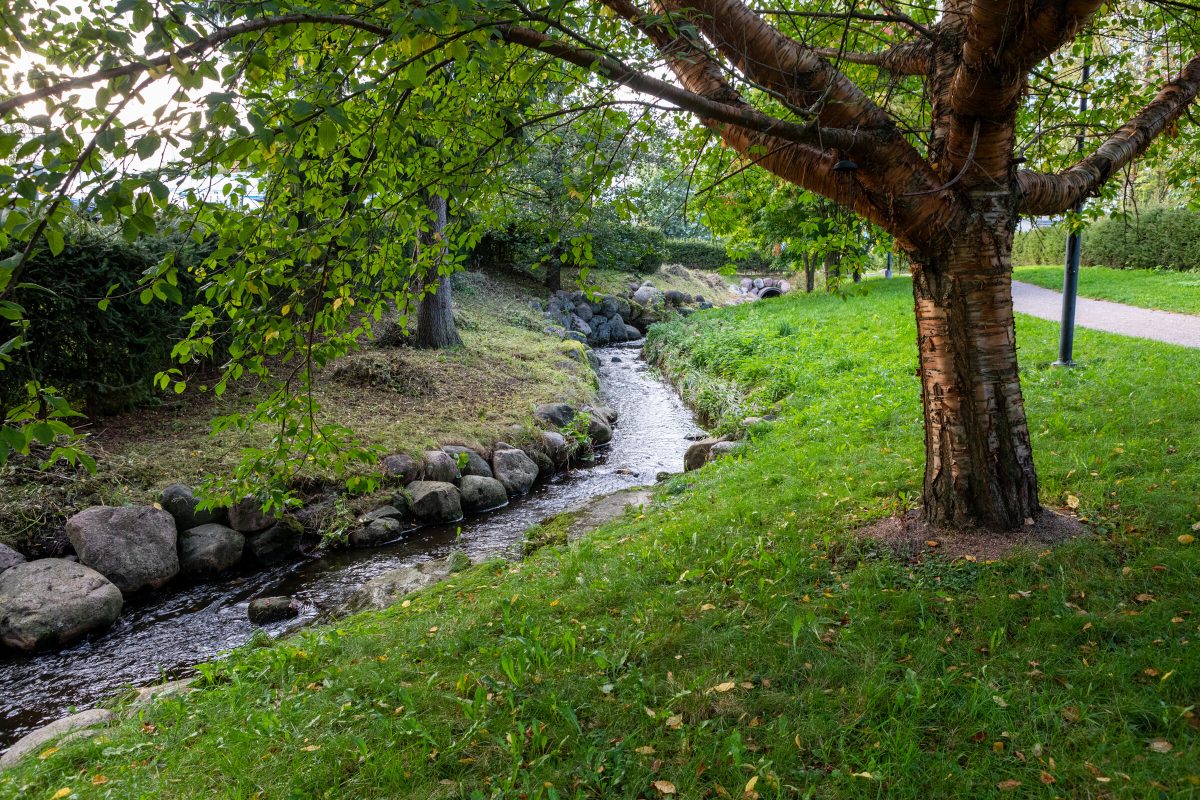Competition for space
In built-up areas, the coated surface reduces water absorption and absorbs heat. Combined with the effects of climate change, this leads to an increase in flood risk and the heat island phenomenon. Urbanisation accelerates the situation in cities by increasing the pressure of constructing new areas and making existing areas denser, which causes the green structure, which would be able to hold back water and cool the airs, disappear. This leads to competition for space both on the ground and underneath.
In built-up areas, water is discharged through sewers. However, sewerage alone cannot handle the increasing rainfall. The situation is particularly challenging in the city centre, as stormwater flows through a sewage drain, the capacity of which does not withstand heavy rains and whose overflow waters contain sewage. However, even separate rainwater drains would not solve the problem alone, as they are not a cost-effective solution for heavy rainfall. Furthermore, stormwater collects impurities from various surfaces, so stormwater should not be discharged directly into the water system even from rainwater sewers.
In cities, stormwater should be slowed down by various green structures that are able to absorb water or slow down its discharge, as well as to cool the airspace. The green structure is also able to purify stormwater by filtering impurities from it.

Green structure
The green structure includes all kinds of small and large green areas, such as plantings, depressions, wetlands, rain gardens, forested areas and meadows. All that is green, trees in particular, absorb water and cool the air through evaporation.
The green structure has many benefits. In addition to mitigating the effects of climate change, it offers recreational opportunities, improves the microclimate, supports diversity and increases comfort.